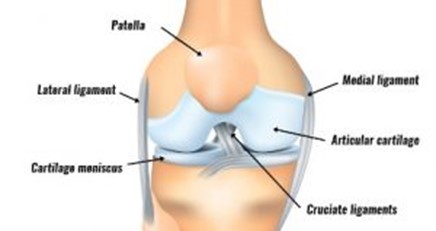By Ben Mauro
According to recent studies, Australia has the highest reported rates of ACL injuries in the world. More alarming, the adolescent athlete demographic, in particular those aged 5-14 years old, has experienced the largest increase in ACL injury incidence in recent times. This blog post contains information of what process we recommend you should take if you or your child suspects they may have a significant knee injury or potential ACL injury.
Anatomy
The knee joint itself is a very stable joint. It bends and it straightens, but that is where the majority of the movement ends. Our knees are surrounded by ligaments, soft tissue (muscles) and other articular surfaces such as the meniscus to help prevent any unwanted lateral or rotational type movements. This makes the knee a very strong weight-bearing joint, where as other lower limb joints such as the hip and ankle have a large amount of mobility, sacrificing some stability, which is taken up by the knee joint.

The ACL & mechanism of injury
The Anterior Cruciate Ligament (ACL) is a ligament that prevents the forward translation of the shinbone on the thighbone. In other words, it provides stability to the knee joint in particularly with rotational and breaking type forces. There are 3 types of ACL injuries:
- Direct Contact (30% of ACL injuries)
- Indirect Contact
- Non-Contact (most common – 70% of ACL injuries)
Due to the ACL’s stabilising function and the frequency of non-contact injuries associated with cutting, jumping and deceleration movements, there is a lot of research into whether these types of injuries are preventable and avoidable with adequate knee strength and proprioceptive training. There are many different protocols that best increase knee health in athletes such as HarmoKnee, Fifa 11+ and Netball Australia’s Knee Program.
Direct injuries to the ACL are often associated in contact and impact forces that tend to drive the knee either into hyperextension, hyper-flexion or an inward force to the knee (valgus). These are more commonly seen in contact type sports such as football, soccer and rugby.
So, I THINK I’ve ‘done’ my ACL…what next?
If you have sustained an injury to your knee and believe that your ACL could be involved, your next move should be to go and see a physiotherapist or sports physician. It is important to gain a thorough knee physical examination to assess not just the ACL but all structures of the knee. This will often dictate your treatment and rehabilitation plan. You may require further imaging to confirm a diagnosis, but it’s always better to be assessed as soon as possible to address any symptoms and get a diagnosis immediately.
Imaging, particularly MRI, should confirm the extent of your knee injury. If you are unfortunate enough to have sustained a high grade (grade 3/rupture) ACL injury the majority of the population will immediately think a reconstructive surgery is needed to repair the tear. Well…research suggests this may not always be the case.
Potential ‘copers’ are individuals that could return to sports and activities that require pivoting and cutting without the need for surgical intervention. To identify these copers, a screening protocol has been developed:
- A series of hop tests
- Incidences of the knee buckling or giving way
- Self-reported functional survey (KOS-ADLS)
- Self-reported global knee function rating
If you do not meet these criteria then surgery could be recommended as a part of your recovery, but if you meet ALL the criteria you could be considered a ‘coper’ and look to return to sport and full function without the need for surgery.
If surgical intervention is recommended, it’s vital to begin pre-operative rehabilitation to get the best results post surgery. The highest incidence of knee stiffness occurs if the ACL surgery is performed when the knee is swollen, painful and has limited range of motion. Early hands-on therapy and exercise prescription to help establish function, strength and ROM are optimal ways to get the best out of your knee in this early stage.
In summary
- Never guess, always assess – seek out help from your physiotherapist or sports physician for optimal outcomes for your injury.
- Surgery is often used in rehabilitation of high-grade ACL tears – but it’s just a part of the process. It’s like having a kitchen with JUST a sink but there are no cupboards, bench top, stove or fridge.
- ACL injuries DO NOT ALWAYS require surgical intervention – visit your physiotherapist with an understanding of copers and non-copers to see if surgery is the best option for you
- Early intervention is always better. The sooner you can get the knee moving, the easier the recovery will be later in your recovery.
